JPCM期刊公布2021年“青年领军人”获奖名单

“青年领军人”被定义为在2011年或以后(10年内不包括职业中断)获得博士学位的领域内顶尖研究人员。部分青年研究人员在领域内取得的成果获得了期刊编委会的认可,并举荐成为“青年领军人”的候选人。让我们一起祝贺所有的获奖人!
作者及文章介绍

Ting Cao
- Ting Cao is an assistant professor of Materials Science & Engineering at the University of Washington. His research uses quantum physics, advanced modelling techniques, and high-performance parallel computing to understand condensed matter and predict material properties. He was awarded a GLAM fellowship by Stanford University in 2018.
Xiao-Wei Zhang and Ting Cao 2022 J. Phys.: Condens. Matter 34 264002
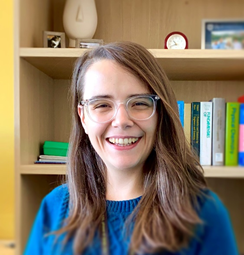
Amanda Carr
- Amanda J. Carr is currently a Postdoctoral Appointee in the Separation Science group of the Chemical Sciences and Engineering Division of Argonne National Lab where she studies graphene-based heavy elements separations with interfacial-specific synchrotron x-ray reflectivity techniques. She received her PhD in Chemistry from Stony Brook University in 2020 after working with Prof. Surita Bhatia and Prof. Matt Eisaman on x-ray and interfacial characterizations of graphene and other nanocomposites, for which she received an Excellence in Doctoral Research Award from the Stony Brook Department of Chemistry. Her infrared reflection adsorption spectroscopy measurements on graphene-polymer laminar composites, the first of their kind, netted her a nomination for the Physical Electronics Conference’s Nottingham Prize where she finished as a finalist in 2020. Dr. Carr has received multiple outstanding presentation awards from both Brookhaven and Argonne National Labs, as well as a Graduate Assistance in Area of National Need Fellowship from the US Department of Education during her PhD work. She graduated from the University of Rochester in 2016 with a major in Chemistry with distinction and a minor in Women’s Studies.
Trivalent ion overcharging on electrified graphene
Amanda J Carr et al 2022 J. Phys.: Condens. Matter 34 144001
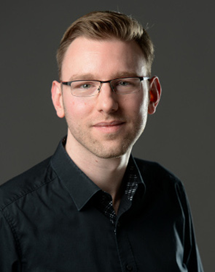
Benjamin Geisler
- Benjamin Geisler studied physics at the Leibniz University Hannover, Germany. After completing his Diploma thesis with Prof. Eric Jeckelmann, he joined the University of Duisburg-Essen, where he received his Ph.D. in 2015 under the supervision of Prof. Peter Kratzer. Subsequently, he worked for the Technical University of Munich and is currently finalizing his Habilitation at the University of Duisburg-Essen in the group of Prof. Rossitza Pentcheva, exploring oxide thermoelectrics, emergent phenomena at complex oxide surfaces and interfaces, and nickelate superconductivity from first principles. He received an Excellent Early Career Researchers start-up grant from the University of Duisburg-Essen for Artificial Intelligence research towards novel oxide energy materials in 2020.
Armin Sahinovic and Benjamin Geisler 2022 J. Phys.: Condens. Matter 34 214003

Xuefeng Zhu
- Xue-Feng Zhu received his B.S. degree in Biomedical Engineering from the Huazhong University of Science and Technology in 2005, the Master’s degree in microelectronics and solid-state electronics from the Shanghai University, and the Ph.D. degree in acoustics from the Nanjing University in 2011. He is currently a professor at the Huazhong University of Science and Technology, Wuhan. His research interests include the symmetry breaking and topological phases in classical wave systems, metamaterials, and metamaterial-based biomedical engineering technology.
Zhi-Guo Geng et al 2022 J. Phys.: Condens. Matter 34 104001

Simeon Gilbert
- Simeon Gilbert received his B.S. in physics from South Dakota State University where he performed research on Heusler compounds with Dr. Parashu Kharel. He then attended the University of Nebraska-Lincoln from 2016-2020 where he received his Ph.D. under the supervision of Prof. Peter Dowben for work on the electronic properties of quasi-one-dimensional transition metal trichalcogenides. In 2020, he became a postdoctoral associate at Sandia National Laboratories where he is currently researching granular metal thin films. His research interests broadly span the synthesis, structural, electronic, and optical properties of novel nanomaterials.
The effect of metal–insulator interface interactions on electrical transport in granular metals
Simeon J Gilbert et al 2022 J. Phys.: Condens. Matter 34 204007

Marie-Therese Huebsch
- Marie-Therese Huebsch is a scientist at the VASP software GmbH that develops and maintains the Vienna ab-initio simulation package (VASP). Her research evolved from model-based calculations with advanced diagrammatic methods of many-body perturbation theory toward realistic material calculations focusing on magnetism. After finishing her Master’s degree at TU Wien, she was awarded a scholarship as an International Program Associate at RIKEN Center for Emergent Matter Science (CEMS) in Japan, where she benefited from close collaborations with experimentalists. In 2021, she received her Ph. D. degree in complexity science and engineering from the University of Tokyo. In pursuit of her scientific goal to predict the magnetic ground state from first principles, she is working on the frontiers of ab-initio calculations and magnetism in VASP.
Magnetic structures and electronic properties of cubic-pyrochlore ruthenates from first principles
M-T Huebsch et al 2022 J. Phys.: Condens. Matter 34 194003
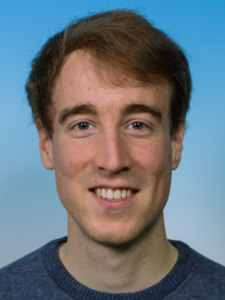
Gerhard Jung
- Gerhard Jung is a postdoctoral researcher at CNRS (Montpellier, France) and member of the Simon’s Collaboration on “Cracking The Glass Problem”. Under the supervision of Prof. Ludovic Berthier and Giulio Biroli he uses computer simulations and machine-learning techniques to unravel hidden links between the amorphous structure and structural relaxation in supercooled liquids and glasses. Other research interest include confined fluids, dynamics coarse-graining, non-Markovian modelling and non-equilibrium soft matter systems. Gerhard Jung received his Ph.D. in Physics from the University of Mainz (Germany) under the supervision of Prof. Friederike Schmid in 2018. After his Ph.D., he worked as postdoc in the research groups of Prof. Suzanne Fielding (Durham, U.K.) and Prof. Thomas Franosch (Innsbruck, Austria). He was also awarded a short-term JSPS fellowship and collaborated for several months with Prof. Ryoichi Yamamoto in Kyoto (Japan).
Non-Markovian systems out of equilibrium: exact results for two routes of coarse graining
Gerhard Jung 2022 J. Phys.: Condens. Matter 34 204004
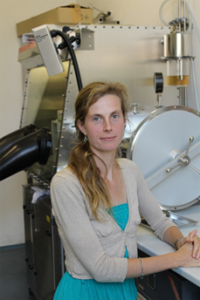
Marie Kratochvilova
- Marie Kratochvilova received her PhD from the Charles University (Czech Republic) in 2015 after working as doctoral researcher on heavy fermion superconductors as a member of the Group of Magnetic Studies at the Condensed Matter Physics Department. From 2016 to 2017 she worked as a postdoc at the IBS Center for Correlated Electron Systems at Seoul National University under Prof. Je-Geun Park. Since 2018 she works as a research scientist at the Charles University. She led a Czech-Korean project focusing on the magnetism of van der Waals materials under extreme pressure and temperature conditions bringing a new research topic in the group. Her recent work includes also synthesis of novel compounds with emerging functional properties for magnetooptical and spintronic applications.
Crystal structure evolution in the van der Waals vanadium trihalides
Marie Kratochvílová et al 2022 J. Phys.: Condens. Matter 34 294007
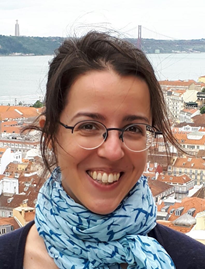
Aline Ramires
- Dr. Aline Ramires is an Ambizione Fellow and junior group leader at the Paul Scherrer Institute. Previously she was a Distinguished Postdoctoral Fellow at the Max Planck Institute for the Physics of Complex Systems, and a Junior Fellow at the Institute for Theoretical Studies at ETH Zurich. Aline Ramires received her Ph.D. from Rutgers University, and received the David C. Langreth Award and the Dean’s Research Award for her Ph.D. work. More recently, she received the UBC Science Early Career Scholar Award for her contributions to the understanding of superconductivity in complex materials.
Nonunitary superconductivity in complex quantum materials
Aline Ramires 2022 J. Phys.: Condens. Matter 34 304001

Yasmine Sassa
- Yasmine Sassa did her Ph.D. at the Paul Scherrer Institute (PSI) and University of Neuch?tel (Switzerland). Her Ph.D. subject was about the elaboration and characterisation of cuprate superconductors thin films by angle-resolved photoelectron spectroscopy (ARPES). After her Ph.D., she did first a postdoc at ETH Z?rich and then moved to Uppsala University (Sweden) after obtaining a postdoctoral fellowship from the Wenner-Gren Foundation in 2014. Since 2019, Yasmine Sassa is holding an tenure-track Assistant Professor position at the Department of Physics in Chalmers University of Technology (Sweden). She is leading the Quantum Materials & Technologies (QuTM) group at the Materials Physics Division at Chalmers. Her research is oriented towards advanced characterization of a wide scope of materials ranging from correlated electron systems (e.g., superconductors) to quantum materials for energy efficient electronics/spintronics (e.g., silicene, skyrmions). Her research group is using the abilities of large-scale facilities by performing X-ray, neutron scattering and muon spin rotation techniques to tackle scientific questions in modern physics.

Jeremy Schultz
- Jeremy Schultz received his PhD in chemistry in 2021 from the University of Illinois Chicago (UIC) where he worked with Prof. Nan Jiang to develop and apply a cryogenic ultrahigh vacuum (UHV) scanning tunneling microscope coupled with tip-enhanced Raman spectroscopy. This tandem technique enables simultaneous nanoimaging and nanospectroscopy to study molecules, nanostructures, and low-dimensional materials on surfaces at the ?ngstr?m-scale. His work has been recognized by various awards, including the Wayne B. Nottingham Prize at the 81st Physical Electronics Conference 2021, the Barbara Stull Graduate Student Award from the Society for Applied Spectroscopy, and the Graduate Research Award from the American Vacuum Society. Jeremy is currently a National Research Council (NRC) Research Associate at the National Institute for Standards and Technology (NIST) where he is developing a cryogenic UHV scanning probe microscope capable of new nanospectroscopic methods to characterize quantum and 2D materials.
Jeremy F Schultz et al 2022 J. Phys.: Condens. Matter 34 204008

Alexander White
- Alexander J. White specializes in theoretical and computational quantum material science. In 2014, he received his Ph.D. in chemistry from University of California San Diego, working with Prof. Misha Galperin on electron and energy transport in molecular nano-junctions. Since then, he has been at Los Alamos National Laboratory, first as a postdoctoral researcher in the Physics of Condensed Matter and Complex Systems group, developing theories and algorithms for nonadiabatic molecular dynamics and ion-transport of hot dense plasma mixtures. In 2017 he was converted to staff scientist in the Physics and Chemistry of Materials group and began developing time-dependent density functional theory methods for matter in extreme conditions.
Alexander J White et al 2022 J. Phys.: Condens. Matter 34 174001

Kesong Yang
- Kesong Yang is currently an Associate Professor in the Department of NanoEngineering and Program of Materials Science and Engineering at the University of California San Diego. His research group focuses on the ab-initio computational design of functional materials and interfaces and the development of high-throughput computational techniques. He received his B.S. degree and Ph.D. degree in Physics from Shandong University, China, in 2010 and worked as a visiting student researcher at the National University of Singapore in 2009. He was a postdoctoral researcher at Duke University from 2010 to 2013 and co-developed AFLOW for automatic materials discovery as one member of the AFLOW Consortium.
Safdar Nazir and Kesong Yang 2022 J. Phys.: Condens. Matter 34 214009
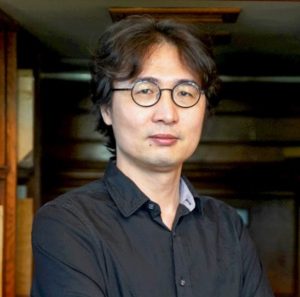
Li Zhu
- Li Zhu received his Ph.D. in physics from Jilin University in 2014. After one year as a postdoc at the University of Basel, he joined the Carnegie Institution for Science as a Postdoctoral Fellow and then a research scientist. In September 2021, he was appointed as an assistant professor in the Department of Physics at Rutgers University-Newark. His research group develops and employs computational methods for materials discovery and design.
Route to a direct-gap silicon allotrope Si32
Shuo Tao and Li Zhu 2022 J. Phys.: Condens. Matter 34 154006

Di Bernardo
- Dr. Di Bernardo received her doctoral degree from Sapienza, Universitá di Roma, in 2018. She received an Endeavour Fellowship from the Australian government in 2016 and a NanoPHI Erasmus Mundus fellowship in 2018 to carry out part of her doctoral research in Australia. After a period as a Research Assistant at the Australian National University (Canberra) she moved to Monash University (Melbourne) to work with Prof. Michael Fuhrer on topological devices. Her current work at Universidad Autonóma de Madrid is supported by a Maria de Zambrano fellowship, and she is set to start her Marie Skłodowska-Curie fellowship in November 2022.
Defects, band bending and ionization rings in MoS2
Iolanda Di Bernardo et al 2022 J. Phys.: Condens. Matter 34 174002
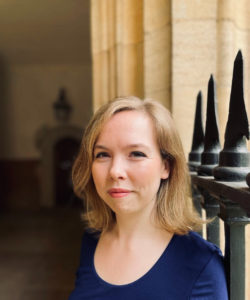
Alice Thorneywork
- Alice Thorneywork is a Royal Society University Research Fellow at the Cavendish Laboratory, University of Cambridge. Her research aims to understand fundamental aspects of transport processes and molecular fluctuations using novel model systems built from soft matter. To achieve this, her group exploits a wide range of experimental techniques, from microfluidics and optical tweezing of colloids, to nanopore sensing and DNA nanotechnology. She began her research career at the University of Oxford, completing an MChem and then a DPhil in Physical Chemistry with Prof. Roel Dullens. For this work, she was awarded the biennial Young Scientist Award from the Statistical Mechanics and Thermodynamics Group of the Royal Society of Chemistry in 2019. She joined the Cavendish Laboratory in 2016, holding an Oppenheimer Research Fellowship and then a Royal Society University Research Fellowship. From September 2022, she will take up a new position as Associate Professor of Physical Chemistry at the University of Oxford.
Observing capture with a colloidal model membrane channel
Stuart F Knowles et al 2022 J. Phys.: Condens. Matter 34 344001
期刊介绍
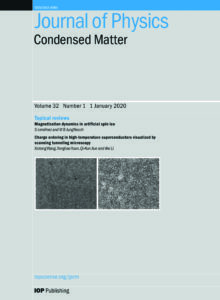
- 2021年影响因子:2.745 Citescore: 4.3
- Journal of Physics: Condensed Matter (JPCM)为读者提供凝聚态物理、软物质、纳米科学和生物物理各领域的最新研究成果。JPCM发表实验/理论分析和模拟研究,读者可以获取涉及下列领域的专题综述、快报和特刊:表面、界面和原子尺度的科学,液体、软物质和生物物理,纳米材料和纳米电子,固体结构的晶格动力,电子结构,超导体和金属、半导体,电介质和铁电,以及磁学与磁性材料。
